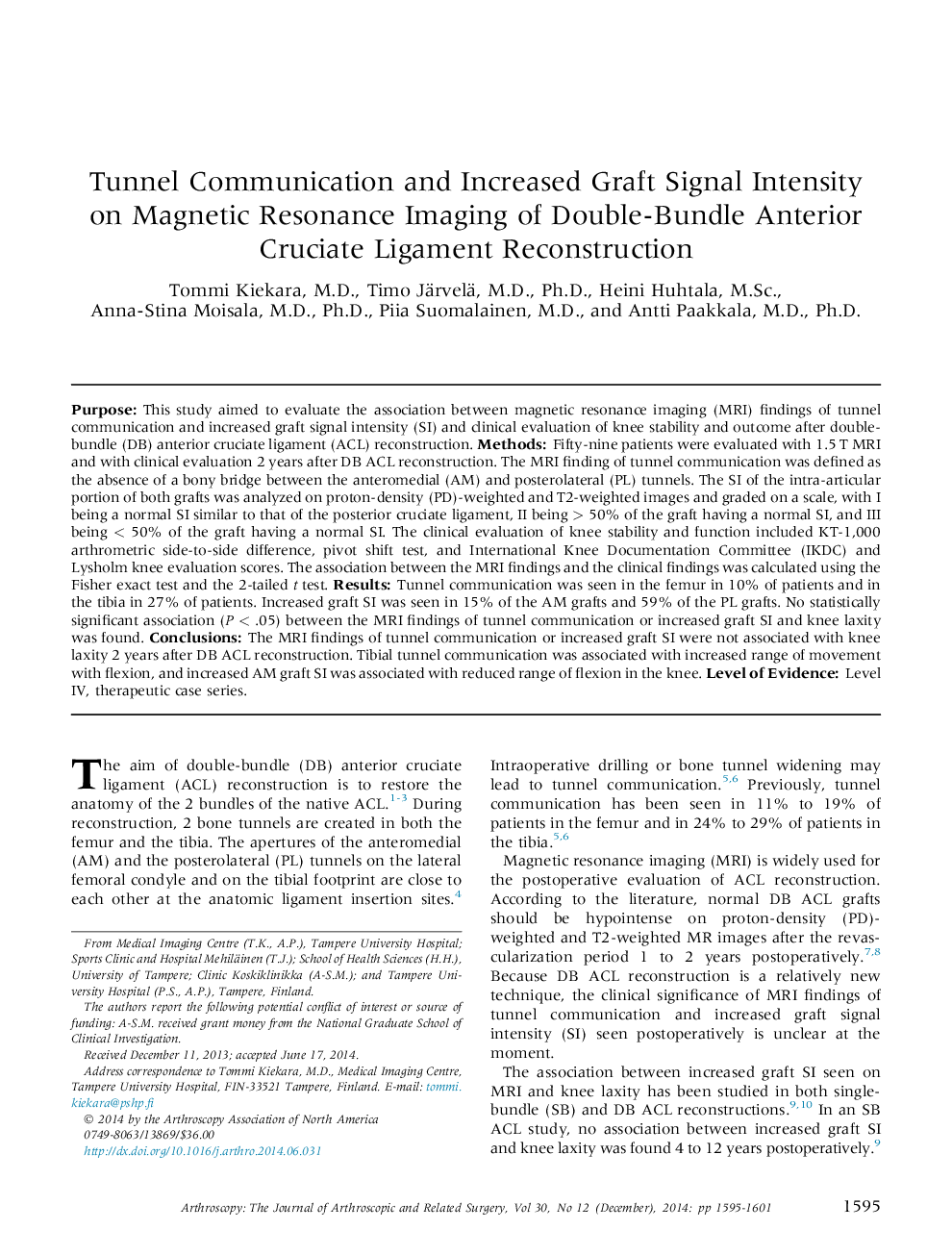| Article ID | Journal | Published Year | Pages | File Type |
|---|---|---|---|---|
| 4042396 | Arthroscopy: The Journal of Arthroscopic & Related Surgery | 2014 | 7 Pages |
PurposeThis study aimed to evaluate the association between magnetic resonance imaging (MRI) findings of tunnel communication and increased graft signal intensity (SI) and clinical evaluation of knee stability and outcome after double-bundle (DB) anterior cruciate ligament (ACL) reconstruction.MethodsFifty-nine patients were evaluated with 1.5 T MRI and with clinical evaluation 2 years after DB ACL reconstruction. The MRI finding of tunnel communication was defined as the absence of a bony bridge between the anteromedial (AM) and posterolateral (PL) tunnels. The SI of the intra-articular portion of both grafts was analyzed on proton-density (PD)-weighted and T2-weighted images and graded on a scale, with I being a normal SI similar to that of the posterior cruciate ligament, II being > 50% of the graft having a normal SI, and III being < 50% of the graft having a normal SI. The clinical evaluation of knee stability and function included KT-1,000 arthrometric side-to-side difference, pivot shift test, and International Knee Documentation Committee (IKDC) and Lysholm knee evaluation scores. The association between the MRI findings and the clinical findings was calculated using the Fisher exact test and the 2-tailed t test.ResultsTunnel communication was seen in the femur in 10% of patients and in the tibia in 27% of patients. Increased graft SI was seen in 15% of the AM grafts and 59% of the PL grafts. No statistically significant association (P < .05) between the MRI findings of tunnel communication or increased graft SI and knee laxity was found.ConclusionsThe MRI findings of tunnel communication or increased graft SI were not associated with knee laxity 2 years after DB ACL reconstruction. Tibial tunnel communication was associated with increased range of movement with flexion, and increased AM graft SI was associated with reduced range of flexion in the knee.Level of EvidenceLevel IV, therapeutic case series.
